SILVANA MOSSANO
Reportage dell’udienza del 29 novembre 2021
Casale Monferrato per l’Eternit, Broni per la Fibronit, Genova, La Spezia e Monfalcone per i cantieri navali: sono le «zone rosse» in Italia per l’incidenza di casi di mesotelioma maligno.
Una certa preoccupata percezione, a Casale, c’era – tutti quei manifesti affissi fuori dallo stabilimento Eternit, ad esempio -, ma è stato all’inizio degli anni Ottanta che si è avuta la prima segnalazione formale che qualcosa non stava andando per niente bene.
Nella tesi di specializzazione del 1983, il dottor Massimo Capra Marzani evidenziava una situazione anomala e meritevole di approfondimenti: in dieci anni (tra il 1973 e il 1982) all’ospedale Santo Spirito di Casale (dove Capra Marzani lavorava nel reparto di Medicina) erano stato diagnosticati 61 casi di mesotelioma maligno alla pleura, di cui 55 (31 uomini e 24 donne) residenti in città e 6 nei comuni limitrofi. Inoltre, annotava che 37 (pari al 61%) non avevano avuto esposizione lavorativa all’amianto (non erano stati cioè dipendenti dell’Eternit) e, inoltre, nel decennio precedente e nello stesso ospedale erano già stati diagnosticati 55 casi (20 uomini e 35 donne) di «neoplasia pleurica». La conclusione era un campanello d’allarme: il tasso di incidenza di 13,75 casi per ogni 100 mila persone all’anno era, a Casale e dintorni, molto superiore rispetto al dato medio in Italia.
STUDI DI COORTE
E’ stato lo spunto per dare il via agli studi epidemiologici: sulla coorte dei lavoratori dell’Eternit nel 1984 -1986, aggiornato nel 1996, 2003, 2008 e 2013; sulla coorte delle mogli dei lavoratori Eternit di Casale, nel 1991, aggiornato nel 2008 e 2013: è stato il primo al mondo a fornire la prova e a misurare la ripercussione sulle mogli, prima esisteva solo un accenno su un articolo pubblicato in Usa; sulla diffusione del mesotelioma maligno nell’area dell’Asl casalese con osservazione a partire dal 1995; uno studio multicentrico italiano sulle coorti di esposti ad amianto nel 2013).
Che cosa vuol dire fare uno studio di coorte? Significa confrontare la frequenza della malattia riscontrata (in questo caso il mesotelioma) tra il gruppo di soggetti esposti (in questo caso alla fibra di amianto) e la popolazione generale o un gruppo di non esposti.
«Il nostro obbiettivo – ha spiegato il professor Corrado Magnani, consulente della procura al processo Eternit Bis, che si svolge in Corte d’Assise a Novara – era quello di verificare e quantificare un’evidenza scientifica, ben prima che rispondere a un’istanza giudiziaria. Cioè, volevamo capire e portare evidenze scientifiche alla comunità locale e al contesto internazionale, perché intuivamo che la situazione era pesante e tale da provocare ricadute importanti. Questi studi – ha proseguito Magnani – hanno contribuito, ad esempio, alla messa al bando dell’amianto in Italia nel 1992 e a fornire comprensione, a livello mondiale, sugli effetti dell’esposizione ambientale all’amianto».
I CONSULENTI EPIDEMIOLOGI
I primi studi partirono per iniziativa degli studiosi Benedetto Terracini ed Enrico Anglesio.
Nel tempo i vari lavori sono stati pubblicati su riviste scientifiche e presentati in consessi internazionali di grande autorevolezza: ciò a riprova della assoluta e riconosciuta fondatezza dei risultati raggiunti.
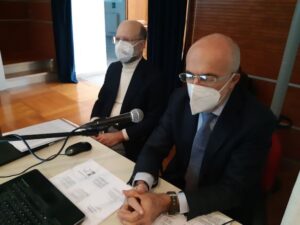
Corrado Magnani insieme a Dario Mirabelli sono gli epidemiologi che i pm Gianfranco Colace e Mariagiovanna Compare hanno incaricato di accertare le cause e i tempi di sviluppo del mesotelioma maligno e di valutare il nesso causale tra l’esposizione all’amianto e l’insorgenza e morte a causa di quella neoplasia. Entrambi i consulenti vantano la pubblicazione di parecchie decine di studi; Magnani è stato docente all’Università del Piemonte Orientale; Mirabelli è stato il referente piemontese del Registro dei Mesoteliomi.
REGISTRO DEI MESOTELIOMI
Ogni regione si è dotata di un proprio Registro; quelli regionali conferiscono nel Registro Nazionale dei Mesoteliomi (abbreviato nell’acronimo ReNaM).
«Il ReNaM – ha spiegato Mirabelli – registra circa 1600 casi di mesotelioma all’anno in Italia. Considerato che la cosiddetta “incidenza di fondo” (cioè il rischio di contrarre questa malattia in assenza di esposizione) è pari, in un anno, a un caso ogni milione di persone, tenendo conto che la popolazione italiana è di 60 milioni di persone dovremmo avere nel nostro Paese 60 casi e non 1600!». La maggior concentrazione si è riscontrata, come si è detto, in certe zone dove appunto l’utilizzo di amianto in misura massiccia era più diffuso (stabilimenti e cantieri navali, in principal modo).
Magnani e Mirabelli hanno esposto i risultati degli approfondimenti eseguiti nell’udienza di lunedì 29 novembre del processo Eternit Bis, in cui l’imprenditore svizzero Stephan Schmidheiny deve rispondere dell’omicidio volontario (con dolo eventuale) di 392 persone di Casale e dintorni morte di mesotelioma, pleurico o peritoneale.
LA SITUAZIONE A CASALE
E’ bene ricordare il contesto. L’attività produttiva dell’Eternit si è svolta a Casale tra il 1907 e il 1986: si producevano lastre piane e ondulate, tubi e condotte ad alta pressione, canne fumarie. Nel 1975, venivano realizzate 595 tonnellate di prodotti al giorno, con l’uso giornaliero di 75 tonnellate di polvere d’amianto e 17 tonnellate di «recupero secco» (cioè derivante da scarti di lavorazione, triturato e macinato per essere reimmesso nel ciclo produttivo). Nel 1979, la produzione era salita a 640 tonnellate al giorno di manufatti (con un incremento del 20% di tubi), che richiedevano l’uso quotidiano di 83 tonnellate di amianto.
Era un’azienda fiorente che impiegò, dal 1950 in poi, 3434 operai; nel 1960 ne erano attivi 1650, nel 1970 erano 1200 e nel 1980 erano diminuiti a 800.
La lavorazione fu sospesa nel 1986, quando fu dichiarato il fallimento della società italiana, ma la dispersione di fibre continuò fino alla bonifica del 2006 eseguita con finanziamenti pubblici.
L’Eternit, come è stato rimarcato, non era soltanto lo stabilimento in via Oggero (quartiere Ronzone) e l’area pressoché antistante della Ex Piemontese (dove avveniva, a cielo aperto, la frantumazione degli scarti), ma includeva anche lo scalo ferroviario attiguo alla stazione, i magazzini di piazza d’Armi con il parco tubi adiacente, la discarica in zona Oltrepo, con l’aggiunta della movimentazione su treni e camion tanto della materia prima in arrivo quanto dei manufatti prodotti destinati alla commercializzazione. Questo per dire che «l’intero centro abitato di Casale era praticamente circondato dai vari plessi dell’Eternit».
IL RISCHIO DI AMMALARSI DI MESOTELIOMA
Gli studi cominciarono a mostrare che per chi aveva lavorato all’Eternit il rischio di ammalarsi aumentava di 50 volte rispetto alla media. Ma anche chi non ci aveva lavorato era comunque bersaglio della malattia, con un’esposizione graduale a seconda della distanza dall’abitazione allo stabilimento. Per chi abitava a meno di 500 metri dalla fabbrica il rischio di mesotelioma aumentava di 27,7 volte; per chi stava a due chilometri e mezzo il rischio era di 11 volte superiore; aumento di rischio di 8,3 volte per i residenti nei paesi del circondario.
Il dottor Massimo Capra Marzani aveva ben ragione a evidenziare l’allarmante situazione che aveva «visto» nella casistica di mesoteliomi al Santo Spirito! Nei confronti del medico casalese il professor Magnani ha espresso, pubblicamente, gratitudine.
I 392 CASI ESAMINATI
«I 392 casi di mesotelioma maligno esaminati per il processo Eternit Bis – hanno spiegato i consulenti – rappresentano una parte dei 1254 insorti nella popolazione di Casale e dei comuni vicini dal 1990 al 2018, in base ai dati del Registro dei Mesoteliomi».
Nel dettaglio: dei 1254 casi 729 erano uomini, 525 erano donne. Ma il dato è significativo quando si fa il confronto con la situazione nel resto del Piemonte (che, pure, è una regione con un elevato numero di mesoteliomi) dove i casi conteggiati sono in tutto 4315 (2860 uomini e 1455 donne). Quindi, poco meno di un terzo risultano concentrati nel territorio Casalese.
Per ciascuna delle 392 persone è stata realizzata e consegnata alla procura una scheda dettagliatissima che racconta l’esistenza di ognuna delle vittime: un quadro della vita lavorativa, delle abitazioni, delle ipotesi di altre esposizioni (ad esempio, il vialetto di casa pavimentato con frammenti di scarti di eternit o il sottotetto coibentato col polverino) e poi una valutazione complessiva che analizza i diversificati momenti di esposizione alla fibra nell’aria.
SONO TUTTI MESOTELIOMI
Il punto di partenza è che tutte e 392 le vittime elencate nel capo di imputazione hanno avuto una diagnosi di mesotelioma. E che l’amianto causa il mesotelioma maligno lo si sa con certezza dall’inizio degli anni Sessanta: in uno studio (di Wagner e altri) furono analizzati i casi di lavoratori e minatori dell’amianto, dei loro famigliari e delle persone che abitavano nelle zone contaminate. I risultati furono condivisi con la comunità scientifica internazionale nel 1964, in occasione della conferenza della New York Academy of Sciences. A questa conferenza, quasi sessant’anni fa, i professori Enrico Vigliani e Giacomo Mottura riferirono di casi associati a esposizione professionale ad amianto in Lombardia e in Piemonte. Ulteriori conferme sono arrivate successivamente: «In Italia, tra il 1970 e il 2010, sono state condotte decine di studi, 43 dei quali hanno recentemente contribuito allo studio combinato di oltre 50 mila lavoratori dell’amianto». L’EChA (Agenzia europea per le sostanze chimiche) nel 2021 ha confermato la relazione tra esposizione all’amianto e frequenza della patologia.
FORMAZIONE DEL MESOTELIOMA
La cancerogenesi è il processo che genera il tumore, o meglio la cellula capostipite del tumore, attraverso alterazioni che la trasformano da cellula normale in maligna. La trasformazione cellulare non avviene necessariamente subito dopo l’inizio dell’esposizione all’amianto. La fase successiva, fino all’insediamento invisibile del tumore, si chiama «induzione».
Una volta indotto, il cancro, non ancora visibile, è in grado di accrescere autonomamente: è questa la fase «preclinica». Quando la massa tumorale assume una certa consistenza, compaiono i sintomi che portano a diagnosticare la patologia.
La «latenza biologica o reale» coincide con la «fase preclinica», quando il tumore si è insediato, ma non si vede ancora: gli scienziati concordano a stimare una durata intorno ai 10 anni.
Il termine «latenza» (senza aggettivi) – e questo può causare confusione – viene anche usato per indicare una cosa diversa: l’intervallo tra l’inizio dell’esposizione e la diagnosi; così definita, la latenza del mesotelioma è molto più lunga della fase preclinica e può durare anche quaranta o più anni.
TUTTO INIZIA DALL’ESPOSIZIONE
E’ l’esposizione a generare la malattia. In assenza di esposizione il rischio di ammalarsi di mesotelioma è, dunque, estremamente raro.
Inoltre, l’esposizione provoca l’anticipazione della malattia: in alcuni studi questa anticipazione è stata misurata nell’ordine di diversi anni. «E’ vero che tutti moriamo – ha commentato il professor Magnani -, ma un conto è morire prima e un conto è morire dopo».
Esposizione a che cosa? Alle fibre di amianto (finissime e invisibili a occhio nudo), sospese nell’aria che respiriamo.
Non basta, però, conoscere la concentrazione di fibre cui si è esposti, perché conta la durata dell’esposizione: il rapporto tra durata dell’esposizione e rischio di mesotelioma è ben dimostrato da diversi studi. Quindi, più si rimane esposti, più aumenta il rischio di ammalarsi. Quindi bisogna calcolare il fattore tempo.
E, in più, va valutato anche il tipo di fibra che si respira: per tutti i tipi è dimostrata la cancerogenicità per la pleura, ma il rischio è massimo per la crocidolite (o amianto blu) e più contenuto (ma superiore a zero) per il crisotilo (o amianto bianco).
ESPOSIZIONE CUMULATIVA
Una persona, nel corso della vita, abita in luoghi diversi e può svolgere mansioni professionali diverse: «Il rischio di mesotelioma – hanno insistito i consulenti del pm – è tanto maggiore quanto più elevata è stata l’esposizione cumulativa, che tiene conto dell’entità di esposizione, del tempo per cui si è protratta, dei cambiamenti nelle modalità di lavoro e di attività svolte dalla persona, e delle eventuali variazioni di residenza».
«Chi ha vissuto l’epoca dell’amianto – ha riassunto Mirabelli – ha avuto molteplici circostanze di esposizione che, però, non sono in competizione tra loro, anzi hanno cooperato a determinare il mesotelioma». L’epidemiologo ha elencato un certo numero di aziende casalesi, pubbliche e private, che impiegavano l’amianto non come materia prima (quindi in concentrazioni assai lontane da quelle dell’Eternit), ma in certe fasi specifiche dell’attività (coibenti, materiali d’attrito, trecciatura, tessuti, pavimentazioni, pulizie…). Analizzando i 392 casi del processo, sono state ricordate per completezza e correttezza anche queste esposizioni che possono avere avuto un’incidenza, cui va aggiunta una valutazione delle esposizioni ambientali. A proposito delle esposizioni ambientali è utile una considerazione (qui esemplificativa, ma tenuta presente dai consulenti caso per caso): se una persona trascorre 8 ore al giorno in un posto di lavoro, per 5 giorni alla settimana, per 42 settimane all’anno, e al contempo vive a Casale 24 ore al giorno, per 7 giorni su 7, per 52 settimane, il tempo di esposizione sul posto di lavoro è pari a un quarto del totale, mentre quello fuori dal posto di lavoro e nel contesto abitativo è (circa) 3 volte maggiore. Quindi il peso dell’esposizione ambientale è maggiore di quanto non si penserebbe, se si considerasse soltanto il fatto che la concentrazione delle fibre di amianto nell’aria della città è più bassa di quella nell’ambiente di lavoro.
PROSSIMA UDIENZA

Il calendario di dicembre è stato così riorganizzato. Lunedì 6, saranno esaminati tre consulenti delle parti civili: l’anatomopatologo Mauro Papotti, il medico del lavoro Pietro Gino Barbieri e l’epidemiologo Edoardo Bai. Lunedì 13, è previsto il controesame dei consulenti della procura: Massimiliano Buggiani e Pavilio Piccioni, pneumologi, Ferruccio Perrelli, medico del lavoro, Corrado Magnani e Dario Mirabelli epidemiologi. Lunedì 20, esame e controesame di Irma Dianzani, genetista (consulente della procura: avrebbe dovuto esporre la propria relazione lunedì 29, ma per mancanza di tempo è stata rinviata).
Traduzione di Vicky Franzinetti
Translation by Vicky Franzinetti
November the 29th, 2021 Eternit Hearing
SILVANA MOSSANO
Casale Monferrato with Eternit, Broni with Fibronit, Genoa, La Spezia and Monfalcone with the shipyards: these are Italy’s red zones, defined as such because of the incidence of malignant mesothelioma cases. In Casale people started worrying when all those death notices were being pinned outside the Eternit plant: it was the early 1980s that was the first clue that something was not as it should have been.
In his 1983 post graduate thesis, Dr. Massimo Capra Marzani pointed out an anomalous situation that deserved further investigation: in the ten years between 1973 and 1982, 61 cases of pleural malignant mesothelioma had been diagnosed at Casale’s Santo Spirito Hospital (where Dr. Capra Marzani worked in Medicine) 55 of which (31 men and 24 women) lived in Casale and 6 in neighbouring towns. Moreover, he noted that 37 (61%) had not been exposed to asbestos at work (i.e., they had not been employed by Eternit) and, in addition, 55 (20 men and 35 women) pleural neoplasia cases had already been diagnosed in the previous decade and at the same hospital. His conclusions were a wake-up call: the incidence rate of 13.75 cases per 100,000 people per year was much higher than the average figure in Italy in Casale and its surroundings.
COHORT STUDIES
It was the starting point for epidemiological studies: the 1984-1986 cohort of Eternit workers, updated in 1996, 2003, 2008 and 2013; the cohort of the wives of Eternit workers in Casale, in 1991, updated in 2008 and 2013. It was the first study in the world to provide evidence and measure impact on wives. Previously there had only been a mention in a US article. The spread of malignant mesothelioma was observed in the Casale Asl area from 1995; and an Italian multicenter study on cohorts of asbestos exposed in 2013.
What does performing a cohort study mean? It means comparing the frequency of the disease found (in this case mesothelioma) in the group of exposed subjects (in this case exposed to asbestos fibres) and the general population or to an unexposed group.
“Our goal – explained Professor Corrado Magnani, one of the Prosecution’s expert witnesses at the Eternit Bis trial, currently held at the Court of Assizes in Novara – was to verify and quantify scientific evidence, and we did so long before the trials. That is, we wanted to understand and offer scientific evidence to the local community and to the international context, because we sensed that the situation was very difficult and would have a major impact. Furthermore, our studies contributed to the banning of asbestos in Italy in 1992 and contributed to the worldwide understanding of what environmental exposure to asbestos caused”.
EPIDEMIOLOGICAL EXPERT WITNESSES
The first studies were carried out by Professors Benedetto Terracini and Enrico Anglesio.
Over time, research has been published in scientific journals and presented in prestigious international meetings: this demonstrates the results’ unquestionable and recognized validity.
Corrado Magnani and Dario Mirabelli are as expert witnesses, appointed by Public Prosecutors Gianfranco Colace and Mariagiovanna Compare to explain the causes and growth of malignant mesotheliomas and to evaluate the causal link between exposure to asbestos and the onset of the disease and the fatal outcome (death). Both expert witnesses have carried out several dozens of studies; Magnani was a professor at the University of Eastern Piedmont; Mirabelli was in charge of Piedmont’s Mesothelioma Registry.
MESOTHELIOMA REGISTRY
Each region has its own Registry; the regional ones contribute to the National Mesothelioma Registry (abbreviated as ReNaM).
” ReNaM – Mirabelli explained – records about 1600 cases of mesothelioma per year in Italy. Considering that so-called “background incidence” (i.e. the risk of contracting this disease in the absence of exposure) is equal to one case per million people per year, taking into account that the Italian population is 60 million people we should have 60 cases and not 1600 that we have in our country!” As mentioned, the highest concentration was found in certain areas where the use of asbestos was more widespread (especially factories and shipyards).
At the November the 29th Eternit bis hearing (part of the trial against Stephan Schmidheiny, the Swiss businessman accused of having caused the death of 392 people in Casale) , Prof Magnani and Dr Mirabelli presented the results of the research carried out.
THE SITUATION IN CASALE
The context: Eternit’s production took place in Casale between 1907 and 1986: flat and corrugated sheets, pipes and high-pressure ducts, and flues were manufactured. In 1975, this meant 595 tons of products a day, with the daily use of 75 tons of asbestos powder and 17 tons of “dry waste” (i.e., from processing waste, shredded and ground to be put back into the production cycle). By 1979, production had risen to 640 tons per day of manufactured goods (with a 20% increase in pipes), requiring the daily use of 83 tons of asbestos. The company thrived: it employed 3434 workers from 1950 onwards; in 1960 there were 1650, in 1970 there were 1200 and in 1980 numbers had shrunk to 800. Processing was discontinued in 1986, when the Italian company went into bankruptcy, but the release of fibres continued until the area was cleared in 2006 (reclamation carried out with public money).
As has been pointed out, the Eternit manufacturing plant was not only source in Via Oggero (Ronzone District) and the area almost in front of the Ex Piemontese (where the crushing of waste took place in the open air), but also included the railway station next to the station, the warehouses in Piazza d’Armi with the adjacent pipe park, the landfill in the Oltrepo area, with the addition of the train and truck transport of both the raw material and the products for sale. This is to say that “the entire built-up area of Casale was practically surrounded by the various Eternit sites”.
THE RISK OF DEVELOPING MESOTHELIOMA
Studies began to show that for those who had worked at Eternit, the risk of developing the disease increased 50 fold above the average. But even those who had not worked were still developing the disease, with exposure being inversely proportional to the distance between the dwelling home to the plant: for those who lived less than 500 meters from the factory, the risk increased 27.7 times; for those who lived two and a half kilometres away, the risk was 11 times higher; the risk increased by 8.3 times for residents in the surrounding towns.
Dr. Massimo Capra Marzani was right to highlight the alarming situation that he had “seen” in the case history of mesotheliomas at the Santo Spirito Hospital, Professor Magnani expressed his gratitude to the doctor from Casale.
THE 392 CASES
” Based on data from the Mesothelioma Registry, the 392 cases of malignant mesothelioma examined for the Eternit Bis trial – the expert witnesses explained – are a share of the 1254 cases in the population of Casale and neighbouring municipalities from 1990 to 2018.” In detail: of the 1254 cases 729 were men, 525 were women. The figure looks even more significant when compared with the situation in the rest of Piedmont (despite it being a region with a high number of mesotheliomas) where the cases are a total of 4315 (2860 men and 1455 women). This means that a little more than one third are concentrated in the Casale area[1]. A very detailed file was created for each of the 392 victims, and handed over to the prosecutor’s office, and each speaks to their lives: a picture of their working life, their homes, assessing other possible exposures (for example, the driveway paved with fragments of asbestos waste or the attic insulated using asbestos powder) and then an overall assessment that analyzes the different moments of exposure to airborne fibres.
THEY ARE ALL MESOTHELIOMAS
The starting point is that all 392 victims listed in the indictment were diagnosed mesothelioma. And that asbestos causes malignant mesothelioma has been known with certainty since the early 1960s: a study (by Wagner and others) analyzed the cases of asbestos workers and miners, their families and people who lived in contaminated areas. The results were shared with the international scientific community in 1964, at the New York Academy of Sciences conference. At this conference, almost sixty years ago, Professors Enrico Vigliani and Giacomo Mottura reported cases associated with occupational exposure to asbestos in Lombardy and Piedmont. Further confirmation came later: “In Italy, between 1970 and 2010, dozens of studies were conducted, 43 of which have recently contributed to the combined study of more than 50 thousand asbestos workers”. In 2021 the EChA (European Chemicals Agency) confirmed the relationship between exposure to asbestos and frequency of the disease.
THE ONSET OF MESOTHELIOMA
Carcinogenesis is the process that generates the tumour, or rather the parent cell of the tumour, through alterations that transform it from a normal cell into a malignant one. Cell transformation does not necessarily occur immediately after the onset of exposure to asbestos. The next phase, until the invisible establishment of the tumour, is known as “induction.” Once induced, the cancer, not yet visible, is able to grow independently: this is the “preclinical” phase. When the tumour mass grows to a certain size, symptoms appear, and that leads to diagnose the disease. The “biological or real latency” coincides with the “preclinical phase”, when the tumour is there, but not yet seen: scientists agree to estimate a duration around 10 years. The term “latency” – and this can cause confusion – is also used to indicate a different thing: the time between the beginning of exposure and diagnosis; so defined, the latency of mesothelioma is much longer than the preclinical phase and can last even forty or more years.
EVERYTHING STARTS FROM EXPOSURE
Exposure that generates the disease. In the absence of exposure, the risk of getting mesothelioma is extremely rare. In addition, exposures cause the anticipation of the disease: in some studies this anticipation has been measured and corresponds to several years. “It is true that we all die – commented Professor Magnani – but dying sooner is not the same as dying later “. Exposure to what? To asbestos fibres (very fine and invisible to the naked eye), airborne in the air we breathe. It is not enough, however, to know the concentration of fibres you are exposed to, because the duration of exposure counts: the relationship between duration of exposure and risk of mesothelioma is well demonstrated by several studies.
The longer you are exposed for, the greater the risk of developing the disease. This means you have to factor time in. In addition, the type of fibre should also be considered: carcinogenicity to the pleura has been demonstrated for all types of fibre, but the risk is highest for crocidolite (or blue asbestos) and lower (but greater than zero) for chrysotile (or white asbestos).
CUMULATIVE EXPOSURE
In the course of their lives, a person may live in different places and may perform different work tasks or jobs: “The risk of mesothelioma – insisted the PPs experts- is greater the higher the cumulative exposure, which takes into account the extent of exposure, the time it lasted for, the changes in the jobs and activities carried out by the person, and any moves (changes of residence).
“Those who lived through the era of asbestos – summarized Dr Mirabelli – had multiple circumstances of exposure that, however, are not in competition with each other, rather they cooperated to determine the mesothelioma.” The epidemiologist listed a number of companies in the Casale area, both public and private, that used asbestos not as a raw material (therefore in concentrations far removed from those of Eternit), but in certain specific phases of activity (insulation, friction materials, braiding, textiles, flooring, cleaning…). In analyzing the 392 cases in the trial, these exposures that may have had an impact were also recalled for completeness and correctness, and should be added when considering environmental exposures. As for environmental exposures, it is useful to remember (the example that follows if just to illustrate, but kept in mind by the consultants on a case-by-case basis): if a person spends 8 hours a day in a workplace, 5 days a week, 42 weeks a year, and also lives in Casale 24 hours a day, 7 days a week, for 52 weeks, the exposure time in the workplace is equal to a quarter of the total, while the exposure time outside the workplace and in the living context is (about) 3 times higher. Thus, the burden of environmental exposure is greater than one would think if one considered only the concentration of asbestos fibres in city air is lower than that in the work environment.
NEXT HEARING
The December calendar has been reorganized as follows. On Monday 6, three expert witnesses of the plaintiffs will be heard: the pathologist Dr Mauro Papotti, the occupational physician Dr Pietro Gino Barbieri and the epidemiologist Edoardo Bai. On Monday 13, the cross-examination of the prosecutor’s experts is scheduled: Dr Massimiliano Buggiani and Dr Pavilio Piccioni, pulmonologists, Dr Ferruccio Perrelli, occupational physician, Prof Corrado Magnani and Dr Dario Mirabelli, epidemiologists. On Monday 20, examination and cross-examination of Prof Irma Dianzani, geneticist (PP’s expert witness: she should have been heard on Monday 29, but due to lack of time her testimony was postponed).
[1] Population of Piedmont 4,356,000/ population of Casale 34,246

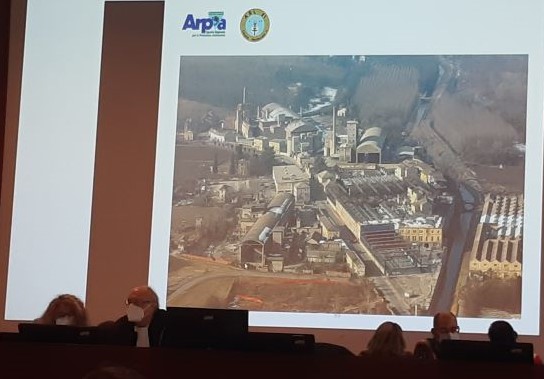
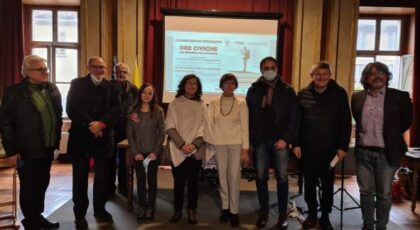
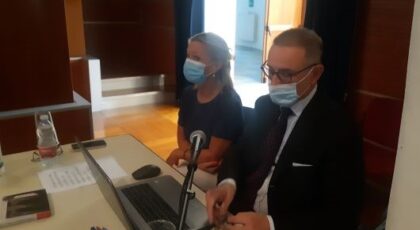
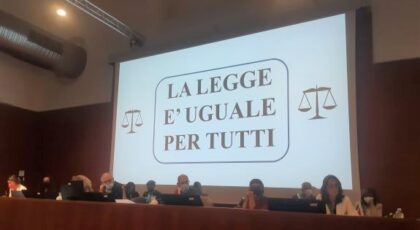

Come sempre grazie per resoconto. Ti invio richiesta a parte per motivi di privacy.
Chi ti legge anche se non a mai avuto un familiare colpito da questa terribile malattia prende sempre più coscienza della gravità della situazione. Grazie per le dettagliate informazioni.